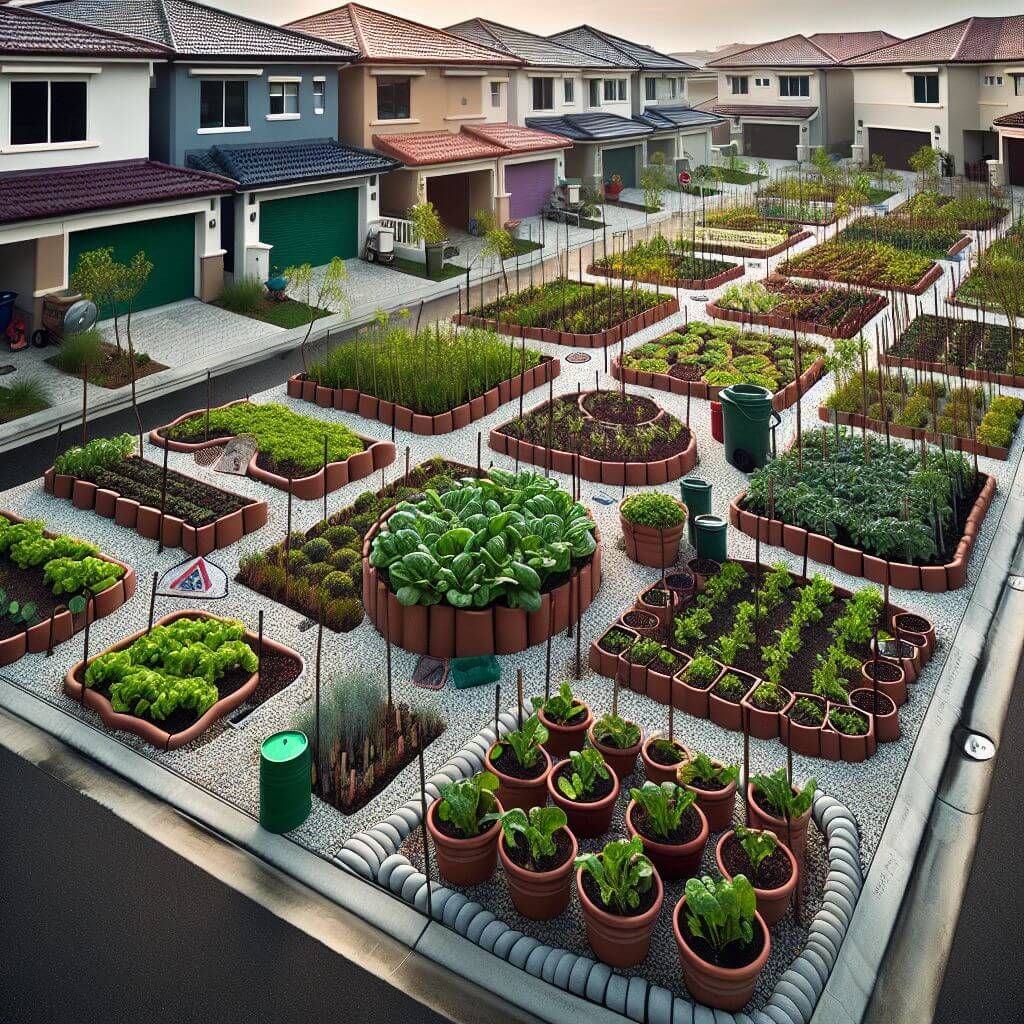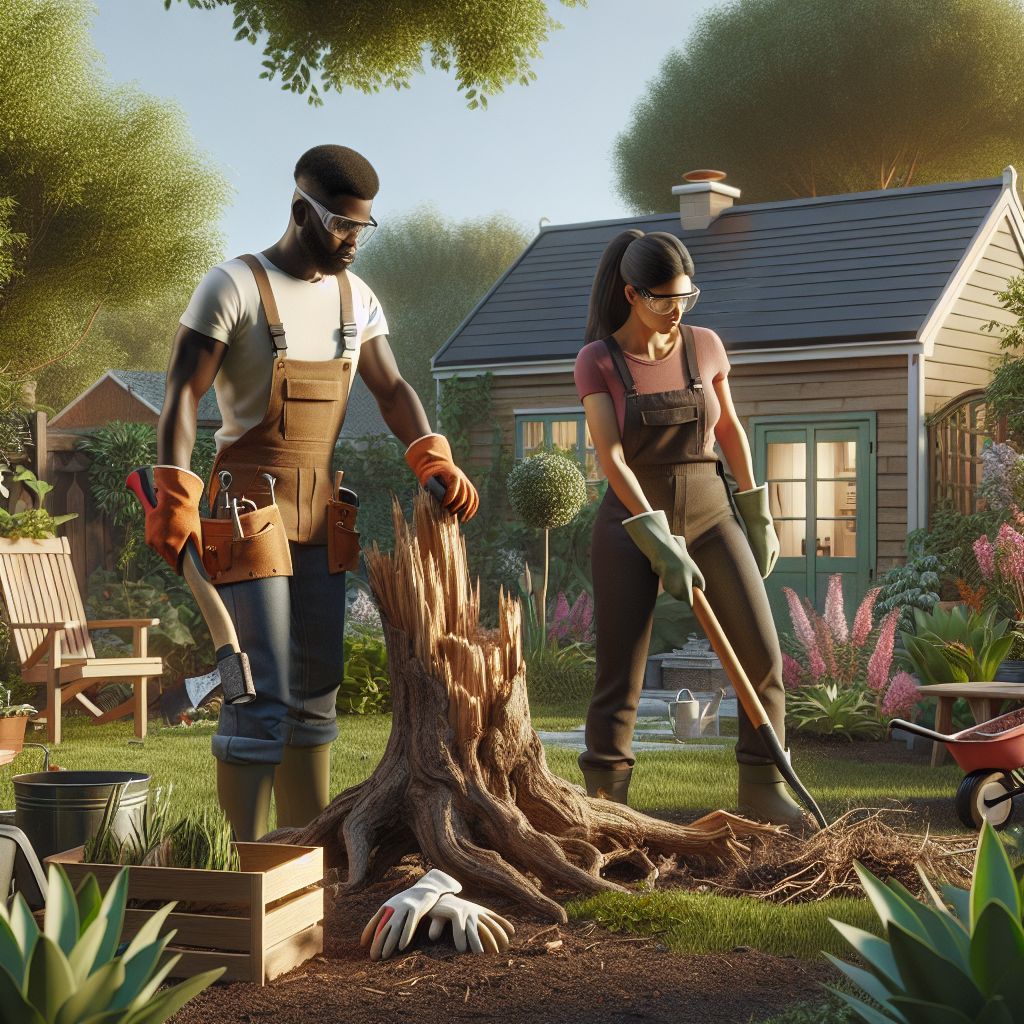
Key Takeaways
Creating a fire-defensible urban garden involves strategic plant selection and spacing.
Regular maintenance, such as cleaning debris and pruning, is crucial to mitigate wildfire risks.
Immediate action plans and evacuation essentials can save lives during a wildfire threat.
Fire-smart landscaping techniques like irrigation and mulching can help prevent fire spread.
Engaging with the community and utilizing local resources increases overall fire prevention awareness.
Secure Your Green Space: Urban Garden fire Safety

Most importantly, when we talk about urban survival, one aspect that often gets overlooked is the role our gardens play in fire safety. You might not think that your little green oasis could be a potential fire hazard, but in the face of increasing urban wildfires, it’s time to take action. This is about empowering you with the knowledge to create a safe, fire-resistant space that not only thrives but also provides an essential defense against the unexpected.
Quick Checklist for fire Preparation
Assess the vegetation around your home for flammability.
Remove dead plants, trees, and shrubs to reduce potential fuel.
Keep your lawn hydrated and maintained to prevent it from becoming tinder.
Create a 5-foot non-combustible zone around your home.
Store firewood at least 30 feet away from your house.
The Role of Gardens in Urban Fire Safety
Your garden can be a first line of defense or a contributing factor to the spread of a wildfire. Because urban areas are densely packed, a fire in one garden can quickly become a community-wide catastrophe. Therefore, understanding how to manage your garden can significantly reduce the risk of fire spreading to your home and beyond.
Let’s break this down. Your choice of plants, their arrangement, and how well you maintain your garden can either fuel a fire or stop it in its tracks. Think of your garden as a buffer zone – the more fire-resistant it is, the safer your home will be.
Besides that, a well-maintained garden can also be a sign to firefighters that your home is defensible, potentially making it a priority for protection during a wildfire. Now, let’s get into the specifics of what you can do to ensure your urban garden is not just surviving, but also serving as a protective barrier against wildfires.
Understanding Urban Fire Risks
As urbanization encroaches upon natural landscapes, the interface between human settlements and vegetation becomes a focal point for fire safety concerns. This convergence increases the potential for fire incidents due to the close proximity of combustible materials.
How Urban fires are Different
Urban fires are different from their rural counterparts because they can spread rapidly through dense neighborhoods, igniting homes, gardens, and other structures in their path. The materials used in urban landscaping, such as wood chips or certain types of mulch, can inadvertently provide fuel for fires. For more information on creating a fire-resistant landscape, visit Firescape Gardening.
Because of this, it’s essential to take a proactive approach. You can’t control when or where a wildfire will strike, but you can control how prepared your garden is. Learn more about enhancing backyard garden biodiversity and resilience to better prepare for such events.
Assessing Your Garden’s Risk Profile
Before you can protect your garden, you need to understand its risk profile. Start by looking at the plants you have – are they high in oils or resins that make them highly flammable? Do you have trees that drop a lot of leaves or needles, creating a bed of tinder? How close are these plants to your home or other structures?
Take a walk around your garden and note any areas that might need attention. It’s not just about what you have growing in your garden, but also how things are arranged. Dense clusters of vegetation can create a ‘fire ladder’ that allows flames to climb and spread.
Creating Your Fire-Defensible Garden

Creating a fire-defensible garden doesn’t mean you have to sacrifice beauty for safety. It’s all about making smart choices and being mindful of how those choices impact your garden’s fire safety.
Strategic Plant Selection
Choosing the right plants is the first step to a fire-resilient garden. Opt for species that are low in resins and oils, as they are less likely to ignite. For example, broad-leafed deciduous plants are generally more fire-resistant than conifers or plants with waxy leaves.
Here’s a simple rule of thumb: if it’s green and lush, it’s probably a good choice. Succulents and other plants with high water content are excellent options because they’re less likely to burn. Remember, diversity is key – a variety of plants not only looks great but can also help prevent the spread of fire.
Spacing Vegetation for Safety
How you arrange your plants can be just as important as the plants themselves. To prevent fires from spreading, you’ll want to space out trees and large shrubs so that there’s a gap between their canopies. This helps to break up the continuity of fuel and slows down any potential fire.
For smaller plants, consider creating groupings with noncombustible materials like stone or gravel in between. This not only looks stylish but also acts as a firebreak, stopping flames from sweeping across your garden.
Utilizing Fire-Resistant Materials
When it comes to the non-living elements of your garden, choose materials that won’t contribute to a fire. Instead of using flammable mulches like pine bark, go for noncombustible options such as rock or gravel. When building decks, fences, or trellises, consider materials like metal or treated wood that have a higher fire resistance.
And remember, the placement of these materials matters too. Keep mulch and other potentially flammable landscaping materials at least 5 feet away from the base of your home to create a defensible space.
Seasonal Maintenance to Mitigate fire Risks

A well-maintained garden is a safer garden. Regular maintenance is vital in reducing your wildfire risk, and there are a few key tasks you should be doing each season.
Cleaning Debris and Pruning: Best Practices
Regularly remove leaves, needles, and other debris from your garden beds and lawn.
Prune trees and shrubs to keep branches at least 10 feet away from your home and other structures.
Clear gutters and roofs of plant material that can serve as kindling for embers.
Dead Tree and Plant Removal
Dead plants are essentially fuel waiting to ignite. It’s critical to remove any dead or dying trees, shrubs, and vegetation from your garden. If you have trees close to your home, consider hiring a professional to safely remove them.
This is just the start. There’s more to learn about preparing your urban garden for wildfire threats, from developing an action plan to engaging with your community. Stay tuned for the next segment where we’ll dive deeper into these topics and help ensure your green space is as safe as it is beautiful.
Developing a fire Action Plan
When the air smells of smoke and the sky turns a haunting shade of orange, having a wildfire action plan is crucial. This plan should outline the steps you’ll take if a wildfire threatens your area. It’s not just about knowing when to leave; it’s about being prepared for the possibility of not returning home for a while.
Immediate Actions When a Wildfire Threatens
If you find yourself under threat from a wildfire, time is of the essence. Here’s what you need to do immediately:
Stay informed by tuning into local news updates or emergency broadcasts.
If you have an evacuation plan, execute it without delay.
Wear protective clothing and footwear to shield yourself from heat and flying embers.
Gather your family, pets, and any emergency supplies you’ve prepared.
Connect with your community’s emergency response team if available.
Remember, your safety and the safety of your loved ones come before anything else. Material possessions can be replaced, but lives cannot.
Evacuation Essentials: What to Pack and Why
In the rush of an evacuation, you won’t have time to think about what to take. That’s why having a ‘go bag’ ready is a lifesaver. Your go bag should include:
Important documents like passports, birth certificates, and insurance papers.
A first aid kit with essential medications and supplies.
Non-perishable food, water, and a manual can opener.
Flashlights, batteries, and a multi-tool.
Chargers for your mobile devices, and if possible, a battery-powered radio.
By having these essentials packed and ready to go, you can focus on getting yourself and your family out quickly and safely.
Fire-Smart Landscaping Techniques
Your garden’s layout and the materials you use can significantly affect its vulnerability to wildfires. Let’s explore some fire-smart landscaping techniques that can help you create a safer space.
Irrigation and Mulching To Reduce Fire Spread
Proper irrigation is key to maintaining a moist and less flammable garden. Drip irrigation systems are excellent for keeping the soil and plants hydrated without wasting water. When it comes to mulching, choose materials like pebbles or crushed stone over organic mulches, which can easily catch fire.
Choosing and Caring for Low Flammability Plants
Selecting plants that are less likely to ignite and spread fire is a smart move. Some great options include:
Aloe vera, with its high moisture content, is a fire-resistant succulent.
Rockrose, lavender, and sage, which are not only aromatic but also have good fire resistance.
Maples and cherry trees, which are less flammable than pines and firs.
Take care of these plants by ensuring they’re well-watered and free from dead material. This will not only make your garden more beautiful but also more resilient in the face of fire.
Emergency Equipment and Upgrades to Your Home
In addition to preparing your garden, consider the structure of your home. Materials that can withstand high temperatures without igniting can be the difference between damage and destruction.
Installing Fire Barriers and Shields
Fire barriers, such as fire-resistant gels and foams, can be applied to your home’s exterior to provide temporary protection against wildfires. Installing noncombustible shields on windows and vents can also prevent embers from entering and igniting your home.
Modernizing Home Exteriors to Be Fire-Resistant
Consider upgrading the materials on your home’s exterior to those with a higher fire resistance rating. For example, metal roofing and fiber-cement siding are much less likely to catch fire than traditional wood shingles and vinyl siding.
Insurance and Documentation for Urban Garden Owners
In the unfortunate event that a fire does damage your property, having the right insurance and documentation is essential for a smooth recovery process.
Understanding Fire Coverage in Home Insurance
Your home insurance policy should cover fire damage, but it’s important to understand the details. Make sure your coverage includes the cost of rebuilding your home and replacing its contents. Also, check if your policy covers additional living expenses if you’re displaced due to a wildfire.
Documenting your property and belongings with photos and videos can make filing a claim much easier. Store these records in a safe place, like a fireproof safe or a cloud storage service, so you can access them even if your physical copies are lost.
Documenting Your Property and Belongings
To ensure you can prove the value of your losses, keep a detailed inventory of your home and garden. Include the make, model, and serial numbers of equipment, and store receipts for high-value items. This documentation is crucial when it comes time to file an insurance claim.
By taking these proactive steps, you can create a safe and enjoyable urban garden that not only provides a sanctuary in the city but also stands strong against the threat of wildfires. Remember, preparation is key, and it’s never too early to start making your garden more fire-resistant.
Innovative urban gardening can be your best ally in enhancing fire safety. But how do you navigate the potential flammability of your green space? The key is in the design. By incorporating fire-resistant pathways, breaks, and barriers, you’re not just crafting a beautiful landscape; you’re strategically disrupting the path a fire might take. Picture this: a garden path made of flagstones or concrete, meandering through your greenery. Not only does it provide a lovely aesthetic and a clear walkway, but it also serves as a firebreak, stopping flames in their tracks.
Smart technology has revolutionized the way we approach garden health and fire risks. Sensors that measure soil moisture can ensure your garden is well-hydrated and less likely to burn. Smoke detectors and heat sensors placed strategically outdoors can provide early warnings, giving you precious time to react before a fire becomes unmanageable. Imagine a system that not only notifies you of a potential fire but also triggers an irrigation system to dampen the area, slowing down the fire’s spread.
Engaging with the Community in Fire Prevention
Fire safety is not just an individual concern; it’s a community effort. That’s why it’s crucial to engage with your neighbors and local organizations to create a unified front against wildfires. Together, you can share resources, knowledge, and support to ensure everyone’s garden contributes to the safety of the area.
Role of Firewise Communities
Firewise Communities are a prime example of how collective action can make a difference. These are neighborhoods that have banded together to reduce their wildfire risk by following specific guidelines and taking joint action. They often hold educational workshops, organize community cleanup days, and work with local fire departments to create a safer environment for everyone.
For instance, a Firewise Community might organize a ‘chipper day,’ where residents can bring branches, leaves, and other yard waste to be chipped into mulch. This not only cleans up potential fire fuel but also provides a resource for garden beds that is less flammable than traditional wood chips.
By being part of a Firewise Community, you’re not only protecting your home but also contributing to the safety of your entire neighborhood. It’s a powerful way to bring people together for a common cause – the well-being of all.
Local Resources and Workshops
Don’t overlook the power of local resources and workshops. Many fire departments and community organizations offer free or low-cost classes on fire safety and prevention. These can range from how to create defensible spaces to hands-on fire extinguisher training.
These workshops are invaluable, as they often provide specific information relevant to your area’s climate and vegetation. Plus, they’re a great way to meet like-minded neighbors who are also committed to fire safety. Check your local community center or fire department’s website for upcoming events.
FAQ: Answering Your Urban Garden Fire Safety Questions
How Far Should Trees Be from Your Home?
As a rule of thumb, trees should be at least 10 feet away from your home to prevent fires from easily jumping to the structure. For taller trees, increase this distance since flames can reach higher into the air. Prune any branches that hang over your roof or are too close to windows. For more detailed information on creating a defensible space around your home, consider reviewing firescaping guidelines.
What Makes a Plant Fire-Resistant?
A fire-resistant plant typically contains a high moisture content, lacks volatile oils, and has a low amount of dead wood and leaves. These plants are less likely to ignite and can even help to slow down a fire. Examples include aloes, ice plants, and certain species of maples.
Is Mulch a Fire Hazard in Urban Gardens?
Some types of mulch, particularly those made from wood chips or pine needles, can be highly flammable. To reduce fire risk, opt for noncombustible mulches like rock or gravel, especially near your home or other structures.
How Can I Make My Wooden Fence More Fireproof?
To fireproof a wooden fence, you can treat it with a fire-retardant chemical that reduces its flammability. Another option is to install a noncombustible barrier, such as a metal panel, between the fence and your home to prevent flames from spreading.
Example: A homeowner replaced the wooden panels of their fence that were closest to their home with metal ones. This simple switch significantly reduced the risk of fire spreading from the fence to the house.
What Are the First Signs I Should Evacuate During a fire?
The first signs that you should evacuate during a wildfire include official evacuation orders from local authorities, visible flames or smoke in your area, and falling ash. Always trust your instincts – if you feel it’s time to go, don’t hesitate. Your life is more important than anything else.







Leave a Reply